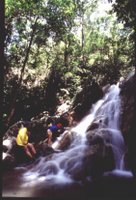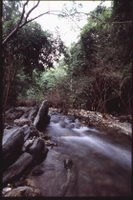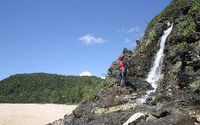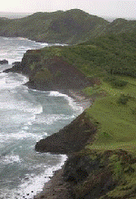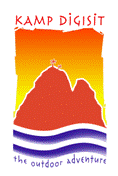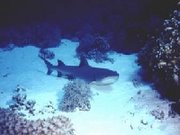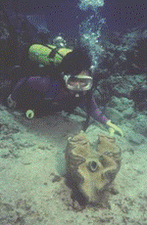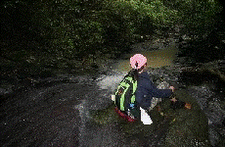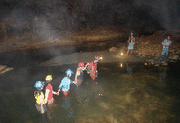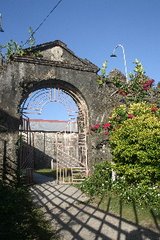
More than 170 students of the University of Perpetual Help - Dr. Jose G. Tamayo Medical University signed up for a fun-filled and highly education program called Marine Environment Exposure Tour or MEET. The program was designed by Louie and Chen Mencias to provide an opportunity for students to learn about environmental issues and consequently increase their awareness on practical solutions. Using the outstanding features of La Luz Resort in San Juan, Batangas, the participants went through three activities - a tidal pool interpretation, snorkeling activity in the fish sanctuary and a mini-adventure race.
 Although the program had been running for four years, NSTP Coordinator Andre Capuyan said that this has been the most hilarious so far. In the mini-adventure race where students answer questions pertaining to a lecture on the marine environment, they were also required to perform certain activities that promoted team work, raised their level of confidence, encouraged leadership and tested their ability to follow instructions. On the race towards the finish line teams were required to don on funny costumes, lock arms and work their way towards the finish line as one unit. One student remarked,"We learned so much from this experience. I wish that I can go through it again, and again and again..."
Although the program had been running for four years, NSTP Coordinator Andre Capuyan said that this has been the most hilarious so far. In the mini-adventure race where students answer questions pertaining to a lecture on the marine environment, they were also required to perform certain activities that promoted team work, raised their level of confidence, encouraged leadership and tested their ability to follow instructions. On the race towards the finish line teams were required to don on funny costumes, lock arms and work their way towards the finish line as one unit. One student remarked,"We learned so much from this experience. I wish that I can go through it again, and again and again..."
Some have mixed emotions regarding which was their favorite activity. First timers say that wearing the mask and snorkel was such an unforgettable experience for them. They absolutely love seeing fishes and live corals and floating above such a colorful and wonderful ecosystem that most people take for granted. Some even start out being afraid of the water. Proper facilitation provides a pleasant exposure that allows participants to go beyond their comfort zone and explore an environment that is totally alien to them. Fear is replaced with appreciation and concern. A few even considers the experience life changing.

To some the mini-adventure race tops it all. The aura of competition provided the right motivation for them to work as a team, follow instructions and have fun at the same time. A slight modification in the activities made it even more challenging. This year, students had a chance to get on a kayak and paddle their way around the raft and back to shore. As more emphasis is given on the concept of global warming, students were able to articulate their ecological footprint and carbon emission. Concepts that used to be as foreign as ET. These two concepts represent one's impact on the environment on a daily basis.

Dr. Larry Avelino, NSTP Director was pleased with the feedback and looks forward to more exposure trips for their students in the future. Outdoor education has been proven to develop life skills and make people more capable to handle issues in their lives and in their communties. Schools are encouraged to bring their students outside of the classroom and go through meaningful experiences that will teach them to become responsible citizens.
For more information on how your school and students can benefit from this program, send an email to wildexpeditions@yahoo.com.












